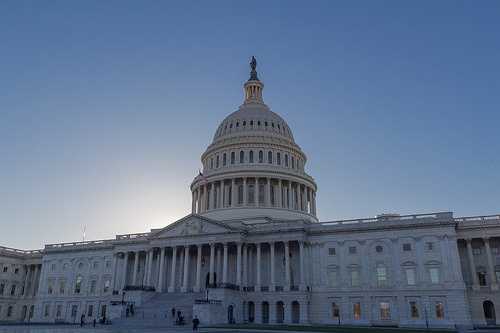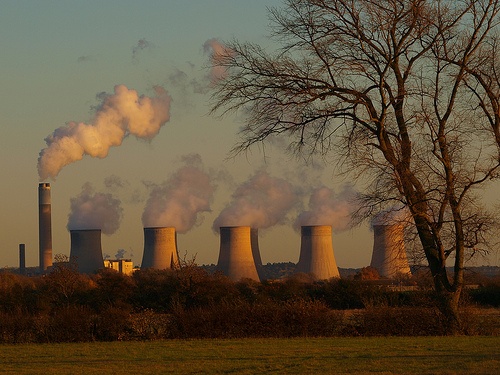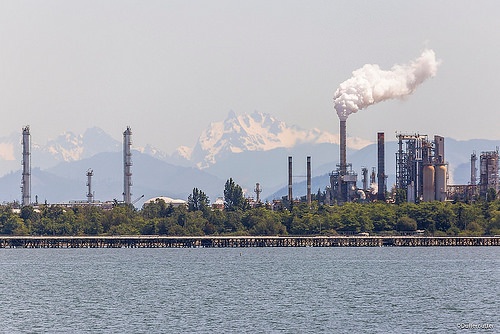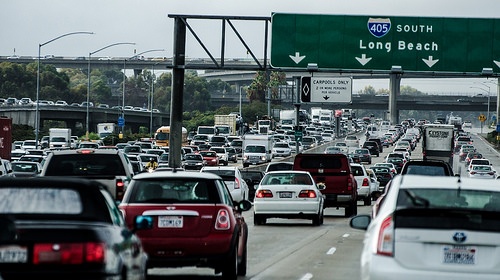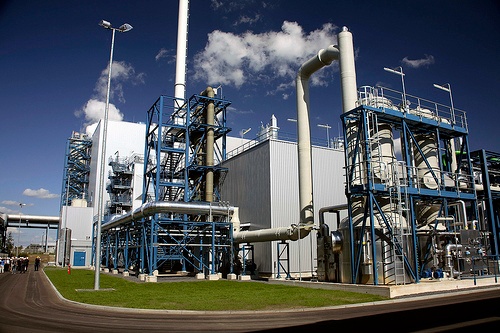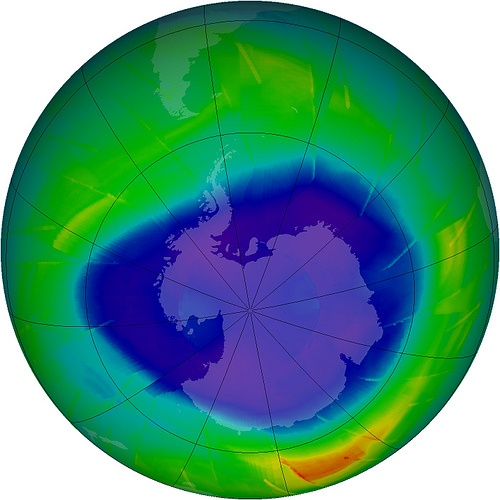Candidate Trump promised to reverse President Obama’s climate initiatives, which he variously described as based on uncertain science and/or as a “war on coal.” Since taking office, President Trump has moved expeditiously to make good on those promises. On March 28 he issued an executive order (EO) “Promoting Energy Independence and Economic Growth,” packaging a large set of repeals and re-directions to move US federal policies firmly away from climate change and toward domestic fossil fuels.
Read MoreAudit, Compliance and Risk Blog
Trump Executive Order Rolls Back Obama’s Climate Initiatives
Posted by Jon Elliott on Tue, Apr 04, 2017
Tags: Environmental risks, Environmental, EPA, climate change
The World Decides To Help The Climate By Helping The Ozone Layer
Posted by Jon Elliott on Tue, Oct 25, 2016
Last month I blogged about basic provisions of the Montreal Protocol on Substances that Deplete the Ozone Layer, and ongoing negotiations to expand it to require phaseout of chemicals that harm the stratospheric ozone layer and contribute to climate change (click here, and included links to early blogs on Montreal Protocol issues). At that time, proposals all focused on hydrofluorocarbons (HFCs). At that point, global HFC use was increasing by roughly 10% annually, driven primarily by expanding use for air conditioning as hot developing countries sought to catch up with comfort levels in their developed counterparts. Proposed timelines and end-targets for reversing that expansion varied considerably.
Read MoreTags: Environmental risks, Environmental, EPA, ghg, climate change
California Tightens Restrictions On High-Impact Short-Lived Climate Pollutants
Posted by Jon Elliott on Tue, Oct 11, 2016
Attempts to reduce greenhouse gas (GHG) emissions are more complex than they first appear. Reports in the mass media tend to focus on carbon dioxide (CO2). The United Nations Framework Convention on Climate Change (Framework Convention) focuses primarily on six GHGs, including CO2 as well as methane (CH4), nitrous oxide (N2O), hydrofluorocarbons, perfluorocarbons, and sulfur hexafluoride (SF6). Climate change scientists have identified hundreds of GHGs, with widely varying sources, relative contributions to climate change (numerical “global warming potential (GWP)”, where CO2 is defined as 1.0), and total contribution based on emitted volumes.
Read MoreTags: California Legislation, Greenhouse Gas, ghg, Hazcom, climate change
U.S. and China Renew Climate Change Vows to Jumpstart Paris Agreement
Posted by Jon Elliott on Tue, Sep 27, 2016
In recent years, the United States and China have found a rare basis for cooperation in their joint efforts to accelerate international efforts to manage and reduce climate change. The first significant step in this cooperation was the two countries’ bilateral agreement in November 2014 to manage greenhouse gas (GHG) emissions within their boundaries (I blogged about it here). At the time, the two countries offered their commitments as a way to reinforce international climate change negotiations underway to replace the expiring Kyoto Protocol to the United Nations Framework Convention on Climate Change. In December 2015, those negotiations produced the Paris Agreement, which established global mechanisms for countries to declare self-enforcing national GHG management commitments (I blogged about the Paris Agreement here).
Read MoreTags: EPA, Greenhouse Gas, ghg, climate change
White House Guidance for Agency Consideration of Climate Change in Environmental Reviews
Posted by Jon Elliott on Tue, Sep 20, 2016
On August 2, the White House’s Council on Environmental Quality (CEQ) issued guidance to assist federal agencies in their consideration of the effects of greenhouse gas (GHG) emissions and climate change when evaluating proposed federal actions. I refer to this documents as “the Guidance” below.
Read MoreTags: Environmental risks, Environmental, EPA, Greenhouse Gas, ghg, climate change, CAA, CEQA
New Rules Tighten Greenhouse Gas Emission Standards for Heavy Duty Vehicles
Posted by Jon Elliott on Thu, Sep 15, 2016
The Clean Air Act (CAA) includes extensive regulatory requirements on “mobile sources,” which cover efficiency and emissions standards for a broad range of vehicles with internal combustion engines (automobiles, buses, aircraft), “nonroad engines and vehicles” (including lawnmowers, bulldozers and marine vessels), as well as motor fuel standards intended to promote cleaner burning fuels. The U.S. Environmental Protection Agency (EPA) uses CAA authority to set emission limits from engines, for CAA-regulated air pollutants, including carbon dioxide (CO2) regulated for its greenhouse gas (GHG) aspects.
Read MoreTags: California Legislation, Environmental risks, Environmental, EPA, Greenhouse Gas, ghg, climate change, CAA, Transportation
Extending the Montreal Protocol to Address Climate Change
Posted by Jon Elliott on Tue, Sep 13, 2016
The Montreal Protocol on Substances that Deplete the Ozone Layer provides the international framework for protecting the earth’s stratospheric ozone layer, by identifying and minimizing emissions of ozone depleting substances (ODSs). The original Montreal Protocol was initialed in September 1987 (I summarized it here). It is widely considered an effective example of international cooperation (I blogged about the healing of the “ozone hole” here), in contrast with ongoing struggles to reach binding international agreements to address climate change. In fact, during 2016 efforts are underway to build on the Montreal Protocol’s strengths by amending it to address additional chemicals that may harm ozone and contribute to climate change.
Read MoreTags: EHS, EPA, Greenhouse Gas, ghg, climate change
Late in the 1970s, measurements in the stratosphere revealed that levels of ozone were falling – the headline summary of this trend was the annual appearance of a thinned-out “ozone hole” over the Arctic and Antarctic regions. Health and environmental and human health scientists worried because stratospheric ozone is an important absorber of potentially damaging ultraviolet radiation (bad for penguins under the ozone hole, and eventually bad for humans on the rest of the planet). Further studies concluded that the culprits were halocarbon chemicals used as refrigerants, solvents, propellants, and foam-blowing agents. Dubbed “ozone depleting substances (ODSs)”, these chemicals (including chlorofluorocarbons (CFCs), halogenated chlorofluorocarbons (HCFCs), freons and halons) are relatively non-reactive when released on the surface, so they persist in the atmosphere long enough to drift up to the stratosphere where incoming solar radiation eventually powers their reaction with ozone.
Read MoreTags: Environmental risks, Environmental, EHS, Hazcom, climate change
Paris Agreement On Climate Change Calls For Action By Non-National Entities
Posted by Jon Elliott on Tue, Jun 21, 2016
Last December, representatives of 195 countries agreed to continue to expand global efforts to combat climate change. The new Paris Agreement breaks a longstanding impasse with a clever mixture of multinational agreements and agreements-to-agree. I summarized its provisions (and the history of the United Nations Framework Convention on Climate Change (Framework Convention) it modifies) here.
Read MoreTags: Health & Safety, EHS, Greenhouse Gas, ghg, climate change, global
On December 11, 2015, representatives of 195 countries agreed to continue to expand global efforts to combat climate change. The new Paris Agreement breaks a longstanding impasse with a clever mixture of binding but unenforceable commitments, and present agreements and ongoing agreements-to-agree. It creates a structure that might, or might not, evolve fast enough to prevent the catastrophic climate changes otherwise predicted by most scientific experts.
Read MoreTags: Environmental risks, Environmental, EHS, EPA, Greenhouse Gas, ghg, climate change

